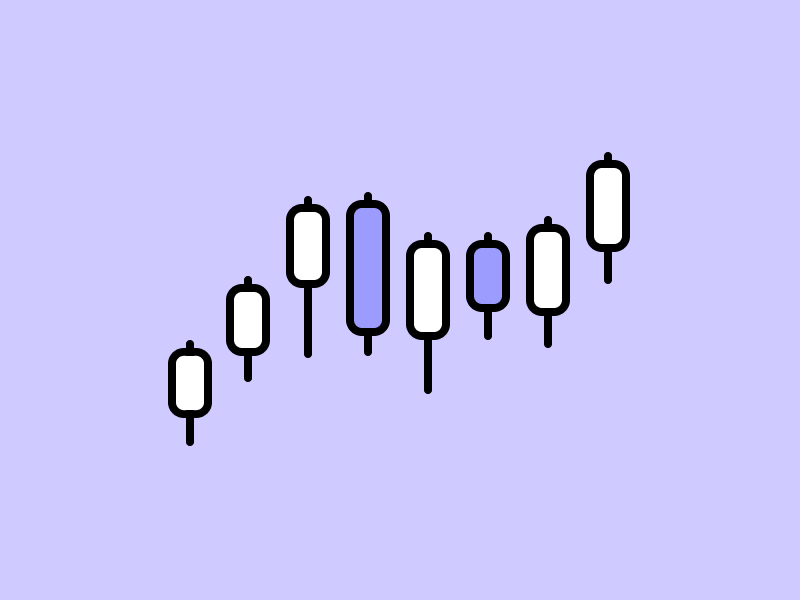What is Stablecoin?

Stablecoins are crypto assets that are designed to have the same value as a certain asset–for example, the US dollar, or another commodity such as gold–to ensure the stability of its price. On many popular stablecoins, the price is stable because its issuers guarantee users can convert it to its native currency or assets with the same value.
Crypto Asset Price Volatility Makes Payments Difficult
Crypto assets such as Bitcoin and Ethereum are notorious for their high volatility when compared to fiat currencies, or currencies that are officially issued by governments. This is unavoidable, because blockchain technology is still relatively new, and the crypto asset market is still relatively small.
As digital assets that can be traded internationally, cryptocurrency excels from a technological point of view. However, high fluctuations in the value of crypto assets making them not well suited for payment for daily transactions. Generally, people expect to know how much money or assets they have today and in the days to come, to give them a sense of security and certainty in their daily lives. This is unpredictable with the highly volatile value of crypto assets.
Stablecoins Promise Stable Prices
Stablecoins allow their owners to transfer assets in a way that is more affordable and quicker around the world like other crypto assets but at a more stable value. It essentially combines the advantages of crypto assets and fiat currencies or native assets—fast transaction processing and security/privacy that crypto assets have and the stable value of fiat currencies or native assets.
What are the types of stablecoins?

Stablecoins Backed by Fiat Money
As one of the most stable currencies, the US dollar is the most popular currency to be used as collateral for stablecoins. However, some stablecoins already use other currencies as collateral such as the RupiahToken which has the same value as the rupiah. Below are some examples of stablecoins backed by fiat currencies:
- Tether (USDT): Tether, or USDT, is one of the pioneer stablecoins launched in 2014, and the most popular to date. The USDT value is guaranteed to be 1:1 to the US dollar. Currently, USDT is one of the most popular stablecoins by market cap.
- USD Coin (USDC): Launched in 2018, USD Coin is a stablecoin co-managed by cryptocurrency companies Circle and Coinbase. Like USDT, the value of USDC is guaranteed to be 1:1 to the US dollar. It is the second-largest stablecoin by market cap.
- RupiahToken (IDRT): RupiahToken is a stablecoin built on the Ethereum blockchain which is guaranteed 1:1 with real rupiah. IDRT digitizes rupiah by producing tokens worth the amount of Rupiah that users deposit, and sending them to the user’s Ethereum wallet.
Stablecoins Backed by Precious Metals
Some crypto assets are also created with a 1:1 guaranteed value with commodities such as gold to ensure price stability. Here are some examples:
- PAX Gold (PAXG) is a digital asset issued by Paxos. Each PAXG token is guaranteed by one troy ounce (approximately 31.1 grams) of gold bullion that has been accredited by the London Bullion Market Association (LBMA). PAXG users can convert PAXG into physical gold pledged and deposited by the Paxos Trust Company in New York.
- Tether Gold (XAUT): One of the largest US dollar stablecoin issuers, Tether, has also released a gold-backed stablecoin namely XAUT. Each XAUT is guaranteed with one troy ounce of London Good Delivery gold bullion. Tether’s gold reserves are kept in a vault in Switzerland, and investors can take their gold in physical form or redeem it for cash.
block-heading joli-heading" id="stablecoins-backed-by-crypto-assets">Stablecoins Backed by Crypto Assets
DAI and MakerDAO
One example of a stablecoin backed by other crypto assets is Dai. Dai is stablecoin built on the Ethereum blockchain programmed to have the same value as the US dollar. With its stable value, Dai is often used for trading crypto and as an investment instrument. Actually, how do you keep Dai’s price stable even though it is backed by other cryptocurrencies that have high price volatility?
Dai on the market today is generated by a decentralized finance application called MakerDAO. To get Dai which is 1:1 in US dollars, users must pledge a certain amount of crypto assets stored in Maker’s vault. The value of the collateral stored in the vault must be higher than the Dai you wish to borrow by a ratio of approximately 150%. That is, if a person wants to borrow a Dai worth 100 US dollars, then he must deposit a crypto asset worth 150 US dollars. If the value of the collateralized crypto asset falls, the Maker protocol can liquidate the collateralized asset to cover the Maker vault payable position. This makes the value of Dai relatively stable 1:1 with the US dollar.
The ratio of the amount of collateral and loans obtained varies depending on the choice of crypto assets that you want to deposit in the Maker vault. The choice of assets that can be guaranteed to get Dai includes ETH, USDC, PAX, YFI, and many more. However, if you don’t want to worry about the process of getting Dai in this way, you can certainly buy it in various crypto trading applications or DEX applications such as Uniswap/Sushiswap.
UST from Terra
Unlike DAI, UST is a stablecoin that is stabilized against the US dollar using an algorithmic mechanism. UST is an algorithmic stablecoin belonging to the Terra network. The algorithm from UST ensures the price remains stable by utilizing the LUNA token as collateral. In theory, every time UST experiences price fluctuations, LUNA will help stabilize the price back to the $1 dollar mark
However, algorithmic stablecoins backed by crypto carry additional risks compared to DAI. This risk comes with a potential death spiral where the algorithmic mechanism of the two tokens will make the price continue to decline in certain situations.
Theoretically, this situation will usually come in a bear market where the market is in a situation of fear and enthusiasm is down. In the event of a massive sale of UST and a depeg happens, the Terra network needs to continuously print LUNA until the price drops drastically due to hyperinflation. Here, the price of UST will continue to fall because investors start to panic, causing LUNA to continue to print and the price to decrease as well.
In the end, this panic cycle will cause UST and LUNA tokens to experience a very drastic decline and Terra will need financial intervention outside of existing mechanisms.
How to Buy Stablecoins?
If you want to buy stablecoins safely and reliably, download Pintu app and trade anytime and anywhere in the palm of your hands. With Pintu, you can start to invest in crypto from as little as IDR 11,000 and invest equal sums of assets at regular intervals with Dollar Cost Averaging (DCA) feature. Simply download Pintu and click the “DCA” feature that you can find on the app’s home page.
Summary
- A stablecoin is a type of crypto asset that is programmed to have the same value as a specific asset–for example, the US dollar, or another commodity such as gold. Popular stablecoins include Tether (USDT) and USD Coin (USDC), which are guaranteed 1:1 in US dollars. This means, one USDC or USDT equals one US dollar.
- Not just limited to fiat money or commodities like gold, some stablecoins are backed by other crypto assets to keep their price stable. One of the example is Dai, which is programmed to have the same value as the US dollar, but using other crypto assets for its collaterals such as ETH, USDC, Paxos, Yearn, and many more.
Reference:
Antonopoulos, A. M. (2021). Mastering Ethereum. Stanford University Press.
The most adopted indonesian rupiah stablecoin. RupiahToken. (n.d.). https://rupiahtoken.com/.
Share


